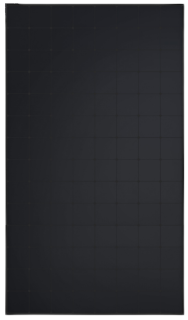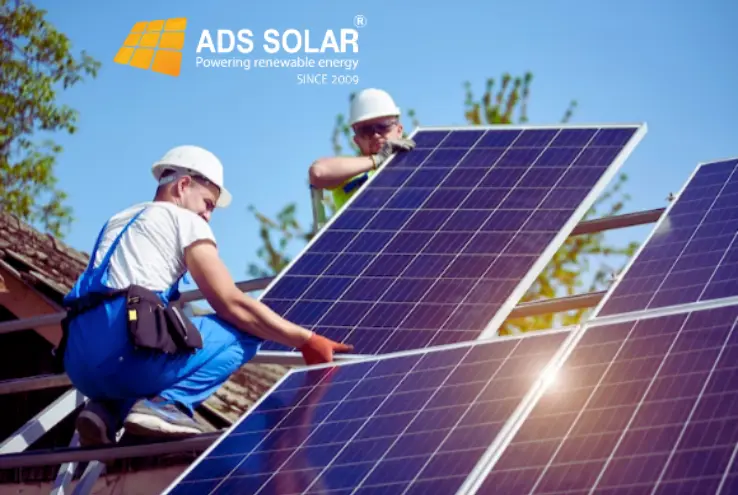6.6kW Solar System in Australia: How Many Panels Are Required?
- The Growing Popularity of Solar Energy in Australia
Australia has emerged as a global leader in solar energy adoption, driven by its abundant sunshine, rising energy costs, and strong governmental incentives. Over the past decade, residential and commercial solar installations have surged, with more than 3 million Australian households now equipped with solar panels. This growth is fuelled by a combination of environmental awareness, technological advancements, and economic benefits. Solar energy not only reduces electricity bills but also contributes to reducing greenhouse gas emissions. As a result, solar power is transforming Australia’s energy landscape, making it a pivotal component of the nation’s shift towards renewable energy sources.
- Importance of Understanding the Components and Specifications of a Solar System
Grasping the components and specifications of a solar system is crucial for making informed decisions about solar energy investments. A typical solar system comprises solar panels, an inverter, mounting structures, and various electrical components. Each element plays a specific role in converting sunlight into usable electricity. Understanding the specifications, such as panel efficiency, wattage, and inverter capacity, helps in selecting the right system to meet energy needs and optimize performance. Proper knowledge ensures that homeowners can maximize their return on investment, achieve energy independence, and contribute to environmental sustainability by choosing the most suitable solar setup for their circumstances.
- Purpose of the Article: To Explain How Many Solar Panels Are Needed for a 6.6kW Solar System in Australia?
This article aims to provide a clear and detailed explanation of how many solar panels are required for a 6.6kW solar system in Australia. Given the varied options in panel wattages and efficiencies, determining the exact number of panels can be complex. This guide will break down the calculations based on different panel specifications and real-world factors, such as roof space and sunlight exposure. By understanding these factors, readers can make informed decisions about their solar investments, ensuring they choose the right number of panels to meet their energy needs and maximize their system’s efficiency and cost-effectiveness.
Understanding Solar Panel Basics

- Definition and function of solar panels
Solar panels are devices that convert sunlight into electricity using photovoltaic cells. They function by capturing sunlight and converting it into direct current (DC) electricity, which is then transformed into alternating current (AC) by an inverter for household or commercial use, effectively harnessing renewable energy from the sun.
- Key metrics: kW (kilowatts), kWh (kilowatt-hours), efficiency, and panel size
Key metrics for solar panels include kilowatts (kW), which measure the system’s power capacity, and kilowatt-hours (kWh), indicating energy production over time. Efficiency reflects how effectively panels convert sunlight into electricity, while panel size influences installation space and overall energy output, impacting the system’s performance and suitability.
- Importance of the efficiency and output of solar panels
The efficiency and output of solar panels are crucial for maximizing energy production and cost savings. Higher efficiency panels generate more electricity from the same sunlight exposure, requiring fewer panels and less space. This enhances the overall performance, reducing installation costs and optimizing the return on investment in solar energy systems.
Factors Affecting the Number of Panels
- Panel wattage: Explanation of different wattage ratings (e.g., 300W, 330W, 370W, 415W, 440W)
Panel wattage refers to the amount of power a solar panel can produce under standard conditions. Common wattage ratings include 300W, 330W, 370W, 415W and 440W. Higher wattage panels generate more electricity, meaning fewer panels are needed to achieve the desired system size. Choosing the right wattage depends on factors such as roof space and budget.
- Efficiency: How efficiency impacts the number of panels required
Efficiency measures how well a solar panel converts sunlight into electricity.

Higher efficiency panels produce more power per square meter, reducing the number of panels required to reach a specific system size. This is especially important for installations with limited roof space, as higher efficiency panels can maximize energy production within the available area.
- Available roof space: Considerations for installation
Available roof space is a critical consideration for solar panel installation. The amount of space determines how many panels can be installed and influences the overall system size. Factors like roof shape, obstructions (chimneys, vents), and shading from nearby structures must be considered to optimize panel placement and ensure maximum sunlight exposure.
- Orientation and tilt of the panels: Optimal positioning for maximum sunlight exposure
The orientation and tilt of solar panels significantly impact their efficiency and energy output. In Australia, panels should generally face north to capture the most sunlight. The optimal tilt angle varies by location but typically matches the latitude of the installation site. Proper orientation and tilt maximize sunlight exposure, enhancing the system’s performance and energy production.

Typical Panel Specifications
- Average wattage of commonly used solar panels in Australia (e.g., 300W to 370W)
In Australia, solar panels typically range in wattage from 300W to 370W. These wattage ratings indicate the power output under standard test conditions. Panels on the lower end, like 300W, are often used in larger arrays, while higher wattage panels, such as 370W, are preferred for maximizing energy production within limited roof space. The selection of panel wattage depends on specific needs, roof size, and budget.
- Impact of higher wattage panels on the number of panels required
Higher wattage panels significantly reduce the number of panels needed to achieve a desired system size. For example, a 6.6kW system would require 22 panels if each is 300W, but only 18 panels if each is 370W. This reduction in panel count decreases installation complexity and space requirements, making higher wattage panels an efficient choice for optimizing solar energy systems.
Real-World Considerations
- Efficiency losses: Factors such as shading, dust, and temperature affecting output
Real-world solar panel performance can be affected by various factors, including shading from nearby trees or buildings, accumulation of dust or debris on panels, and temperature fluctuations. These factors can reduce the efficiency of solar panels and impact energy production. Proper site assessment and maintenance are essential to mitigate these efficiency losses and optimize system performance over time.
- Inverter matching: Ensuring the inverter is compatible with the number of panels
The inverter plays a crucial role in converting the direct current (DC) electricity generated by solar panels into usable alternating current (AC) electricity for household or commercial use. It’s essential to ensure that the inverter’s capacity matches the number and wattage of the panels in the system. Over-sizing or under-sizing the inverter can lead to efficiency losses and may affect system performance. Proper selection and sizing of inverters are necessary for optimal energy production and system reliability.
- Future upgrades: Planning for potential expansion of the system
When installing a solar energy system, it’s prudent to consider future expansion or upgrades. As energy needs change over time or new technologies become available, homeowners may wish to increase the size of their solar arrays. Planning for potential system expansions during the initial installation phase can streamline future upgrades and ensure compatibility with existing components. This proactive approach allows homeowners to adapt their solar systems to evolving energy requirements and take advantage of advancements in solar technology.

Australian Context
- Solar radiation levels in different parts of Australia
Australia boasts abundant sunlight, making it an ideal location for solar energy generation. Solar radiation levels vary across different regions, with areas like Queensland and Western Australia experiencing higher levels of solar irradiance compared to southern regions. Understanding regional solar radiation patterns is crucial for optimizing solar panel placement and maximizing energy production in Australian households.
- Government incentives and rebates for solar installations
The Australian government offers various incentives and rebates to promote the adoption of solar energy systems. These incentives include the Small-scale Renewable Energy Scheme (SRES), which provides financial incentives for eligible solar installations through the issuance of Small-scale Technology Certificates (STCs). Additionally, state and territory governments offer additional rebates and feed-in tariffs to encourage solar uptake. These incentives play a significant role in reducing the upfront costs of solar installations and improving the affordability of renewable energy for homeowners.
- Popularity of the 6.6kW system size in Australian households
The 6.6kW solar system size has gained widespread popularity among Australian households due to its optimal balance of affordability and performance. This system size is well-suited for medium to large households with average energy consumption, offering significant electricity bill savings and a reasonable return on investment. Additionally, advancements in solar panel technology and decreases in installation costs have made the 6.6kW system size increasingly attractive to homeowners seeking to reduce their reliance on grid electricity and lower their carbon footprint.
Cost and ROI
- Average cost of a 6.6kW solar system in Australia
The average cost of a 6.6kW solar system in Australia can vary depending on factors such as panel quality, inverter type, installation complexity, and location. As of recent data, the cost typically ranges between AUD $6,000 to $10,000 before incentives and rebates. However, it’s essential for homeowners to obtain quotes from reputable solar installers to get accurate pricing tailored to their specific requirements and circumstances.
- Expected savings and return on investment (ROI)
Investing in a 6.6kW solar system in Australia offers significant long-term savings on electricity bills and provides a favourable return on investment (ROI). Depending on factors such as electricity usage patterns, feed-in tariffs, and system efficiency, homeowners can expect to recoup their initial investment within 3 to 6 years on average. Over the system’s lifetime (typically 25 years or more), the cumulative savings from reduced electricity bills can far exceed the initial installation cost, resulting in substantial financial benefits.
- Comparison with other system sizes (e.g., 5kW, 10kW)
When considering solar system sizes, homeowners often evaluate the cost-effectiveness and suitability of different options. While a 6.6kW system is popular for its balance of affordability and performance, smaller systems like 5kW may be sufficient for smaller households with lower energy needs, offering lower upfront costs. On the other hand, larger systems such as 10kW are suitable for larger households or properties with higher energy consumption, providing greater potential savings but at a higher initial investment. Evaluating the cost per watt, expected savings, and ROI of each system size helps homeowners make informed decisions based on their specific energy requirements and budget constraints.
Conclusion
In conclusion, determining the number of panels for a solar system relies on various factors, including panel wattage, efficiency, available roof space, and desired system size. Throughout this guide, we’ve highlighted key considerations for homeowners in Australia looking to invest in solar energy. Here’s a recap of the key points:
The number of panels required depends on their wattage and efficiency. Higher wattage panels reduce the overall panel count needed for a given system size, optimizing space and installation costs.
We strongly encourage homeowners to consult with solar professionals for personalized assessments tailored to their specific needs and circumstances. Solar experts can provide valuable insights into system design, panel selection, and optimal placement to maximize energy production and return on investment.
Investing in a solar power system offers numerous benefits, including substantial savings on electricity bills, reduced reliance on fossil fuels, and environmental sustainability. By harnessing the abundant sunlight in Australia, homeowners can take control of their energy consumption, lower their carbon footprint, and contribute to a cleaner, greener future for generations to come.
In conclusion, transitioning to solar power is not only a smart financial decision but also a significant step towards a more sustainable and energy-independent future. Take the first step towards solar energy today and reap the rewards for years to come.
This article, from ADS Solar, represents our expertise as solar retailers and installers serving customers across Australia.


